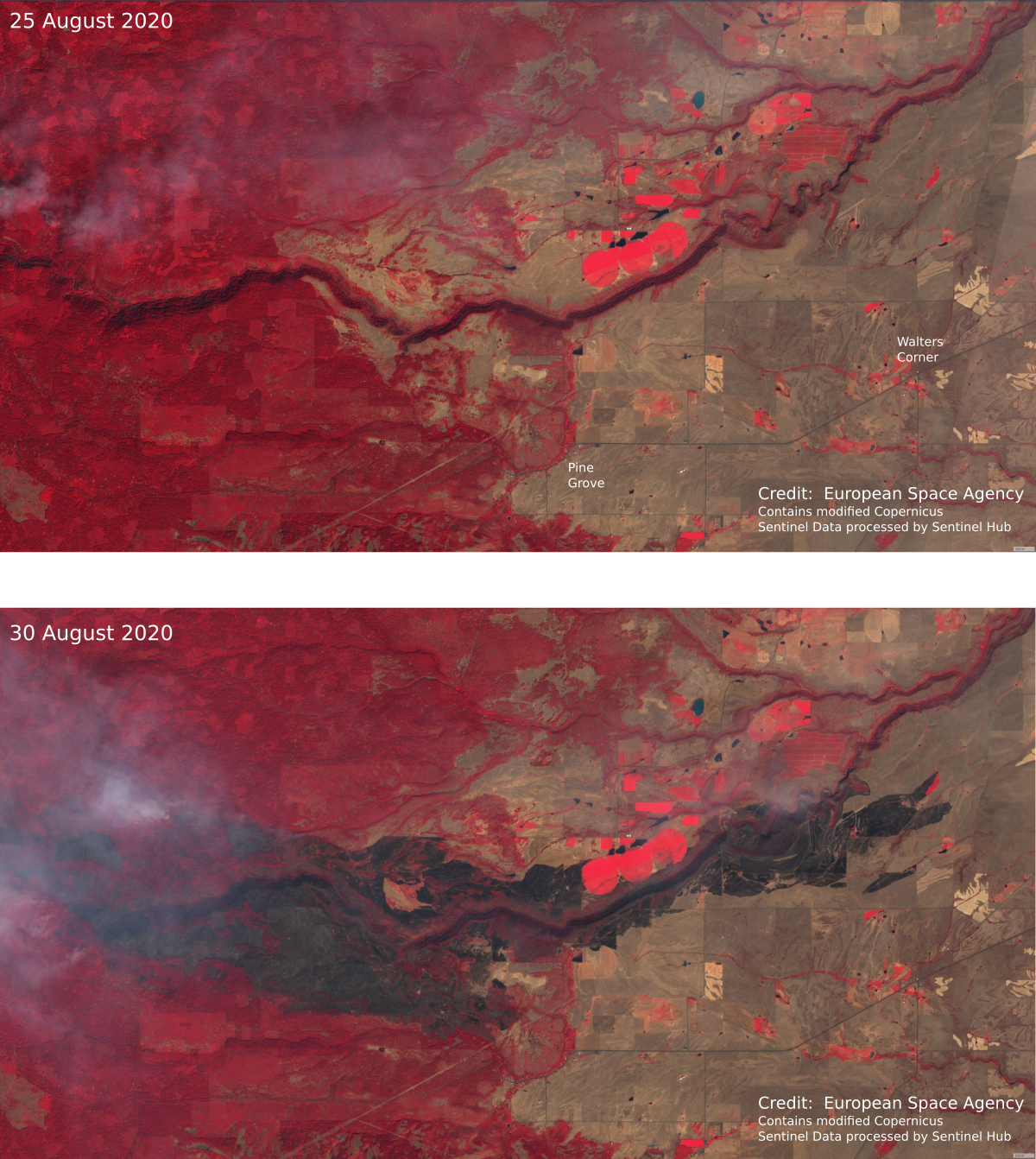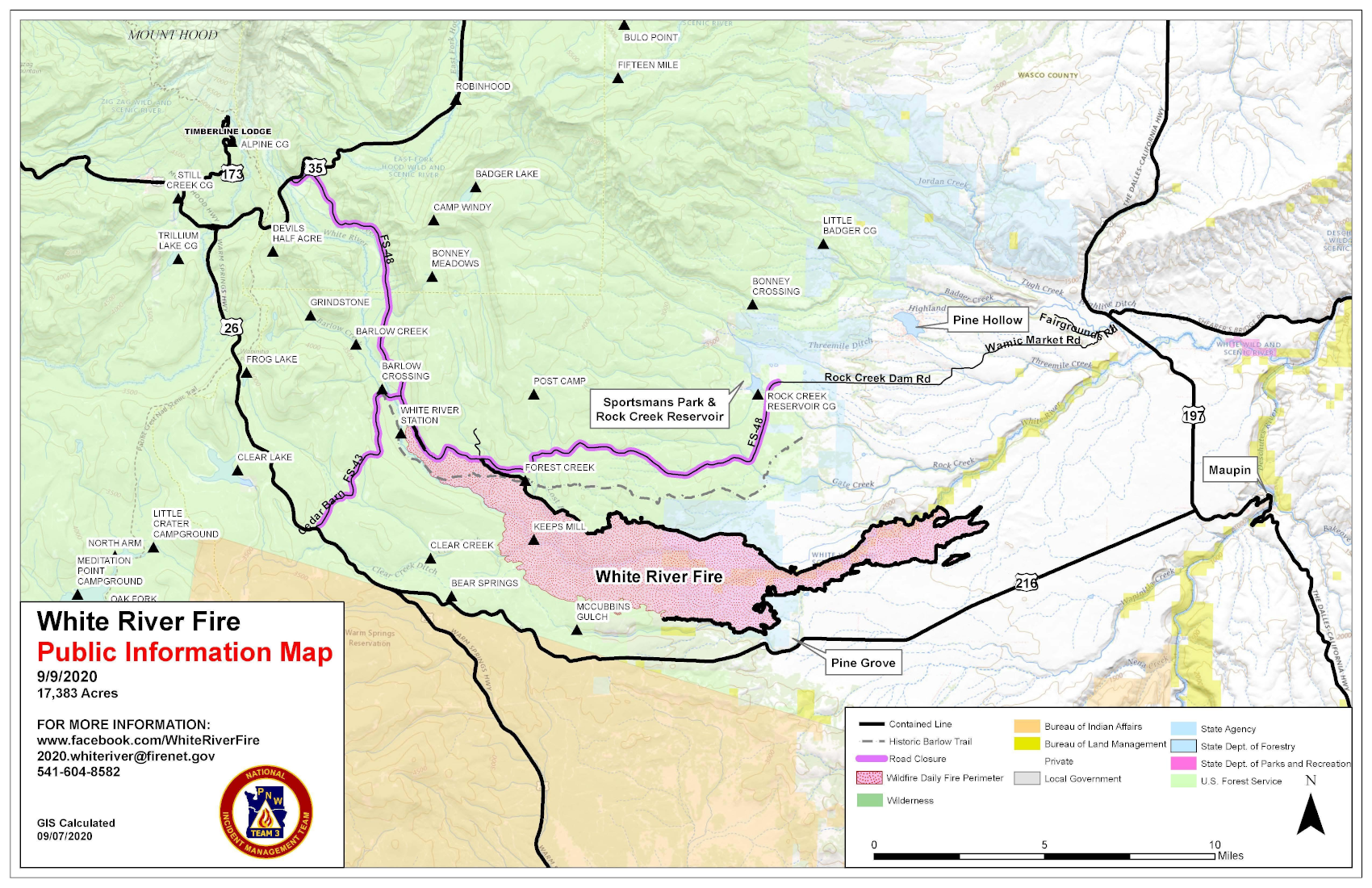
White River Fire
The nationally-recognized White River Fire (WRF) dominated the 2020 fire season in our district. The 17-mile-long WRF threatened Pine Grove for a week, requiring evacuation. Our volunteers fought the fire 18 hours a day and stopped the eastward progress of the fire when it broke out onto the flat and was driven by strong winds over 6 miles in an afternoon.
The pair of false-color satellite photographs below show how quickly the fire spread and the extent of the damage it caused. In these images, green vegetation is rendered with red colors and the burned area is black (bodies of water, like ponds, also are black). The top image is the "before" image and the bottom photo is the "after" image.

Below, the map produced by the National Incident Management Team on 9/9/2020 shows the approximate maximum extent of the fire.

The WRF in our district had two phases: the intense phase in the mixed fuels west of Pine Grove and the fast-moving, wind-driven run to the east of Pine Grove in more open grass and brush. The land off road was rough and rocky in both areas. In the intense phase, the fire was kept out of Pine Grove by hard firefighting in the heavily obstructed mixed forest and brush west of Pine Grove. Despite success in halting the progress of the fire toward the southeast there, the fire burned eastward in the White River canyon north of Pine Grove. It broke out of the canyon and up onto the plateau of Juniper Flat, then made a spectacular run eastward, driven by sustained 20+ mph winds, frequently spotting a mile ahead. The ground on the Flat generally is more open and level, with flashier fuels (grasses, sagebrush intermixed with stands of juniper). The fire blew across roads, fields and small canyons. Despite better gravel roads, routes to the advancing fire line often were long to avoid irregular rock hollows, ditches and shallow canyons, and difficult, with steep gully crossings and hillside traverses. Nonetheless, it's eastward progress was stopped by our volunteers using specialized tactics enabled by trucks designed and built by our volunteers for fast-running fires.
Lessons Learned
The WRF taught us that future wildfires are likely to be larger and harder to stop with standard equipment. Both in the obstructed forest to the west of Pine Grove and the open ground to the east in the Flat, resupply trips (principally for water) take a long time. Consequently, we are upgrading our equipment to include larger engines with up to 1500 gallon tanks, allowing them to suppress fires in pairs (one resupplying while the other holds the fire) and to stay on station longer in the active fire area. Our experience leads us to believe this evolution of our equipment and tactics will allow us to stop fires in the mixed fuel ODF forestland west of Pine Grove before it can reach the community, and to stop the forward progress of fast-moving fires on the Flat to the east.
The new larger engines (see, for example, the Engine 8 page) will allow us to meet these challenges by operating longer between resupply trips.